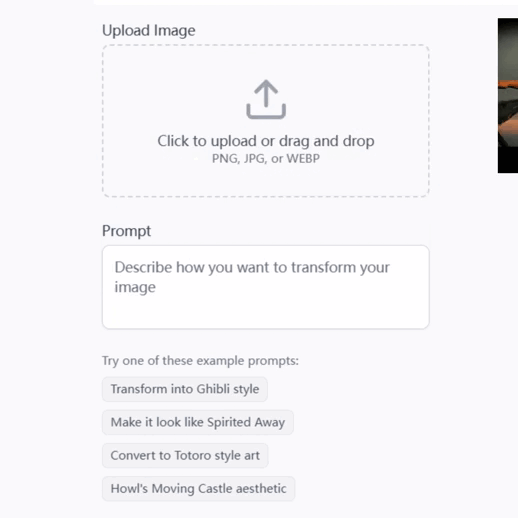
InsurTech - InsurTech Innovation Platform

Welcome to InsurTech, your hub for insurance innovation.
Empowering Insurance with AI Technology
Explain how AI can enhance claims management in the insurance industry.
Discuss the role of IoT in developing new insurance products.
Describe the benefits of automated underwriting processes.
Explore the impact of smart contracts on risk prevention in insurance.
Get Embed Code
Introduction to InsurTech
InsurTech, a blend of 'insurance' and 'technology', refers to the innovative use of technology to streamline and enhance the efficiency of the insurance industry. This sector aims to disrupt traditional insurance models by leveraging cutting-edge technologies such as artificial intelligence (AI), the Internet of Things (IoT), big data analytics, and blockchain. The design purpose of InsurTech is to simplify the insurance process for both providers and consumers, making it more accessible, cost-effective, and customized. For example, a car insurance company utilizing telematics to track driving behaviors can offer personalized insurance rates, rewarding safe drivers with lower premiums. Similarly, health insurers use wearable technology to monitor fitness activities, enabling them to provide incentives for a healthy lifestyle. Powered by ChatGPT-4o。

Main Functions of InsurTech
Claims Management
Example
Automated claims processing using AI
Scenario
An InsurTech platform uses AI to automatically review, process, and approve claims, significantly reducing processing time and human error. For instance, a user submits a claim via a mobile app, and the AI assesses the claim against policy details, instantly approving or flagging it for further review.
Underwriting Automation
Example
Risk assessment using big data analytics
Scenario
InsurTech companies utilize big data analytics to automate the underwriting process, assessing risks more accurately. A homeowner's insurance provider might analyze vast amounts of data, including historical weather patterns, to determine the risk of natural disasters in a specific area, thereby tailoring insurance premiums accordingly.
Smart Contracts
Example
Blockchain-based policy agreements
Scenario
Using blockchain technology, InsurTech enables the creation of smart contracts that automatically execute when certain conditions are met. For example, a flight delay insurance policy could automatically compensate travelers without the need for manual claim submissions, if the delay exceeds a predefined threshold.
Fraud & Risk Prevention
Example
Fraud detection algorithms
Scenario
InsurTech platforms employ sophisticated algorithms to detect and prevent insurance fraud. By analyzing patterns in claim submissions and identifying anomalies, these systems can flag potentially fraudulent claims for further investigation, thereby reducing losses for insurers.
Customer Identification Verification
Example
Digital identity verification tools
Scenario
To streamline the customer onboarding process, InsurTech services use digital identity verification tools. This involves using AI and biometric verification methods, such as facial recognition, to quickly and securely verify the identity of new customers, eliminating paperwork and reducing the risk of identity theft.
Ideal Users of InsurTech Services
Insurance Providers
Traditional and emerging insurance companies looking to enhance their offerings, streamline operations, and reduce costs. InsurTech solutions allow them to automate processes, offer personalized policies, and improve customer satisfaction.
Policyholders
Individuals and businesses seeking more accessible, affordable, and tailored insurance solutions. They benefit from user-friendly platforms, personalized premiums based on behavior or usage, and faster claim processing.
Insurance Agents and Brokers
Professionals seeking to improve their service delivery and efficiency. InsurTech tools can help them access detailed client profiles, market insights, and automated administrative processes, allowing for better advice and customer relationship management.
Tech-Savvy Consumers
Individuals comfortable with using technology and digital platforms who are looking for convenient, transparent, and efficient ways to manage their insurance needs, including comparing policies, filing claims, and tracking their insurance history.

How to Use InsurTech
Start with a Trial
Begin by visiting a platform offering InsurTech solutions, such as yeschat.ai, for a free trial that requires no login or subscription to ChatGPT Plus. This allows for initial exploration without any commitment.
Identify Your Needs
Assess your insurance-related challenges or areas where efficiency could be improved, such as claims processing, fraud detection, or customer service, to better understand which InsurTech features will be most beneficial.
Experiment with Features
Utilize the trial period to experiment with various InsurTech functionalities, including AI-driven analytics, telematics for personalized insurance policies, or automated claims processing, to evaluate their impact on your operations.
Evaluate Results
Analyze the efficiency gains or improvements in customer satisfaction from using InsurTech solutions during the trial. Consider how scalable and customizable the solutions are for your specific requirements.
Commit to a Solution
Based on the trial experience and the evaluation of results, choose an InsurTech solution that aligns with your business goals. Look for options that offer flexibility, ongoing support, and integration capabilities with your existing systems.
Try other advanced and practical GPTs
MinimalismChat
Simplify interactions with AI-powered precision

ExtraGPT
Empower your communication with AI.

myImplementation
Elevate Your Bot with AI-Powered Insights

Taihou
Empowering Your Journey with AI

CalmGPT 🧘🏻♂️
AI-powered Yoga and Mindfulness Companion

Alice
Empower Your Creativity with AI

ストーリーマスター
Empowering RPG Adventures with AI

Numerology
Unlock Your Potential with AI-Powered Numerology

QuerySphere
Where wit meets wisdom.

UTime
Optimize Your Time with AI

DARA
Empowering Financial Compliance with AI

CBAM
Navigating Carbon Compliance with AI

InsurTech Q&A
What is InsurTech and how does it differ from traditional insurance?
InsurTech refers to the application of technology to innovate and streamline the insurance industry. Unlike traditional insurance, which often relies on manual processes and legacy systems, InsurTech leverages AI, data analytics, and the Internet of Things (IoT) to enhance efficiency, personalize policies, and improve risk management.
How can InsurTech improve claims processing?
InsurTech improves claims processing by automating the evaluation of claims through AI algorithms, which can quickly assess damages, verify claims against policy details, and initiate payouts. This reduces processing time, minimizes human error, and enhances customer satisfaction.
What role does data analytics play in InsurTech?
Data analytics in InsurTech plays a crucial role in understanding risk profiles, customizing insurance policies, and setting premiums based on real-time data. It allows insurers to make more informed decisions, offer competitive pricing, and predict future trends more accurately.
Can InsurTech help in fraud detection?
Yes, InsurTech can significantly aid in fraud detection by utilizing machine learning models to analyze patterns and anomalies in claims data that may indicate fraudulent activity. This proactive approach helps insurers minimize losses and protect honest policyholders.
How does InsurTech benefit consumers?
InsurTech benefits consumers by offering more personalized, flexible, and affordable insurance products. It enhances customer experiences through streamlined processes, faster claims resolutions, and access to services via mobile apps, leading to higher satisfaction and engagement.






